Table of Contents
Most of our clients come to us thinking they have a lead generation problem.
When we look closer at their business, it’s easy to see why they think that.
Their offer stinks.
This is overly common with SEO agencies in particular. The concept of an “offer” is never discussed in our world.
That’s why the market for SEO agencies is a “sea of sameness”.
Everyone is selling services…You need to be selling solutions to problems. A clear offer will ensure your agency does that.
Easier said than done, right?
Read on – this post will have everything you need to retool your agency’s offer.
Or, watch this video. It’s a masterclass on offer creation.
What is an “offer”, exactly?
An offer is how you communicate your agency’s value to the market.
More specifically, it speaks directly to your target client’s pain point with a specific solution.
If you haven’t defined your target client, read this post on agency market positioning
To be clear – your offer is not the service you provide (SEO, Web Design, etc) or deliverables (SEO audit, link building, etc).
A good offer has to address pain points – this is key to generating interest. Prospects don’t want to pay for services, they want to pay for solutions.
A well defined offer that attacks pain points makes it easier to generate leads, close deals and increase prices.
We like to communicate an offer though an “offer statement”.
The offer statement
An offer statement is the vehicle that communicates your message to your client. An offer statement is built off 3 questions:
- Who is it for?
- What do they want?
- How do they get it?
Let’s demonstrate using an example.
Example 1 – Case Study Buddy
Case Study buddy helps companies collect, organize and publish case studies for their clients.
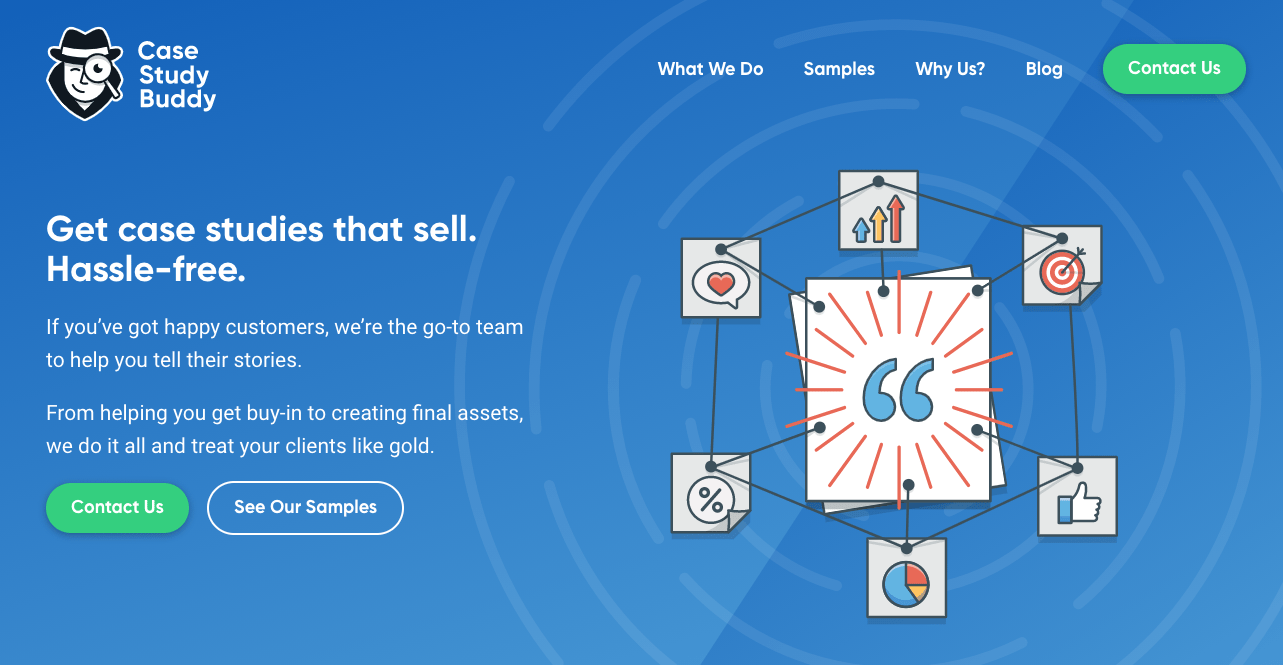
Their offer statement reads:

Each element of the offer statement is accounted for…



Example 2 – WEBRIS
WEBRIS provides SEO services delivered via short term “Sprints” as opposed to long term retainers.
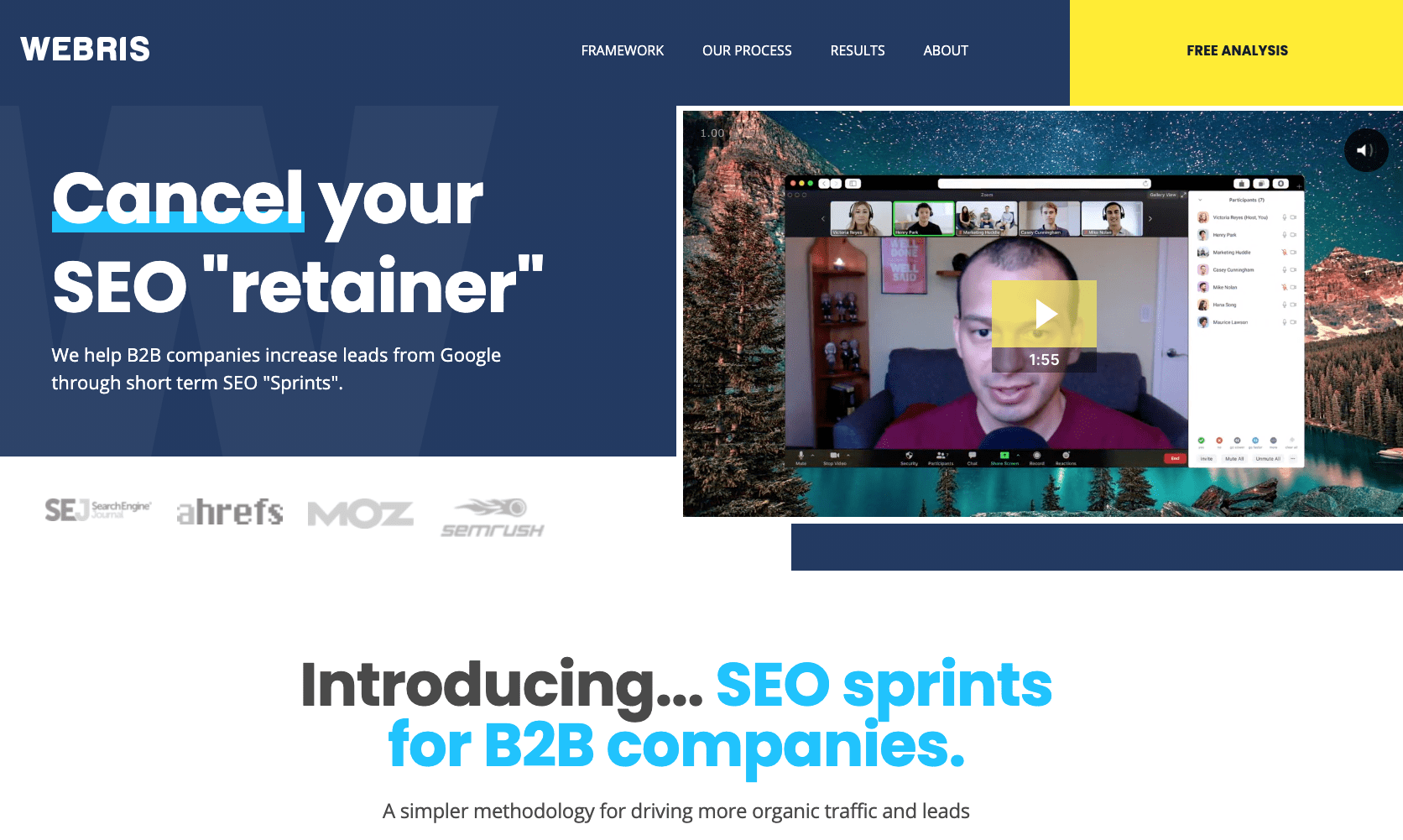
The WEBRIS offer statement reads:
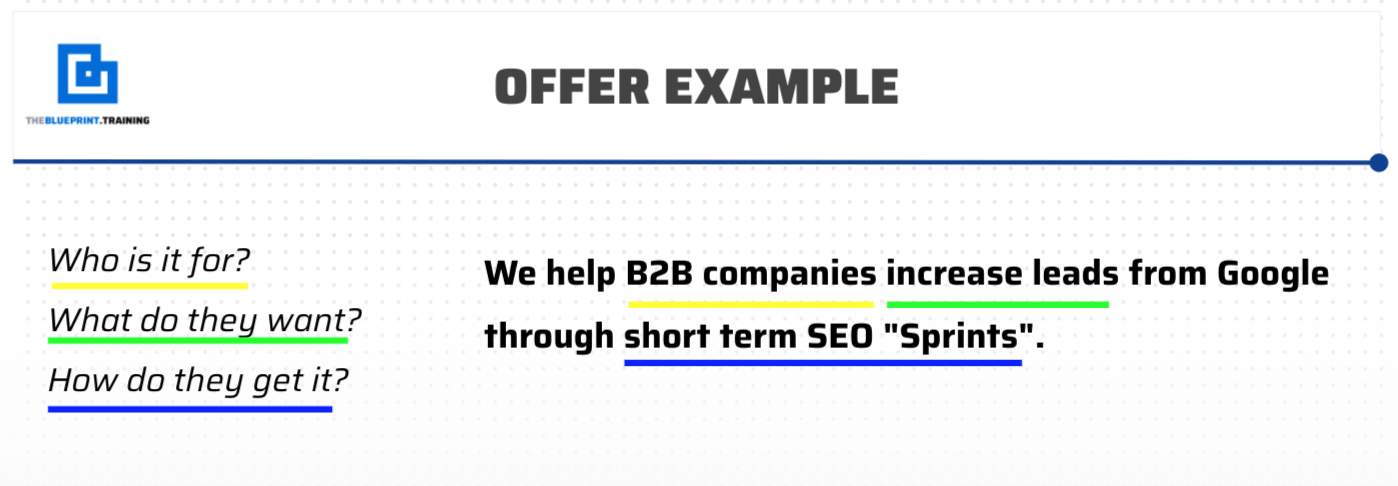
Example 3 – Rankings.io
Rankings provides SEO services to personal injury attorneys.
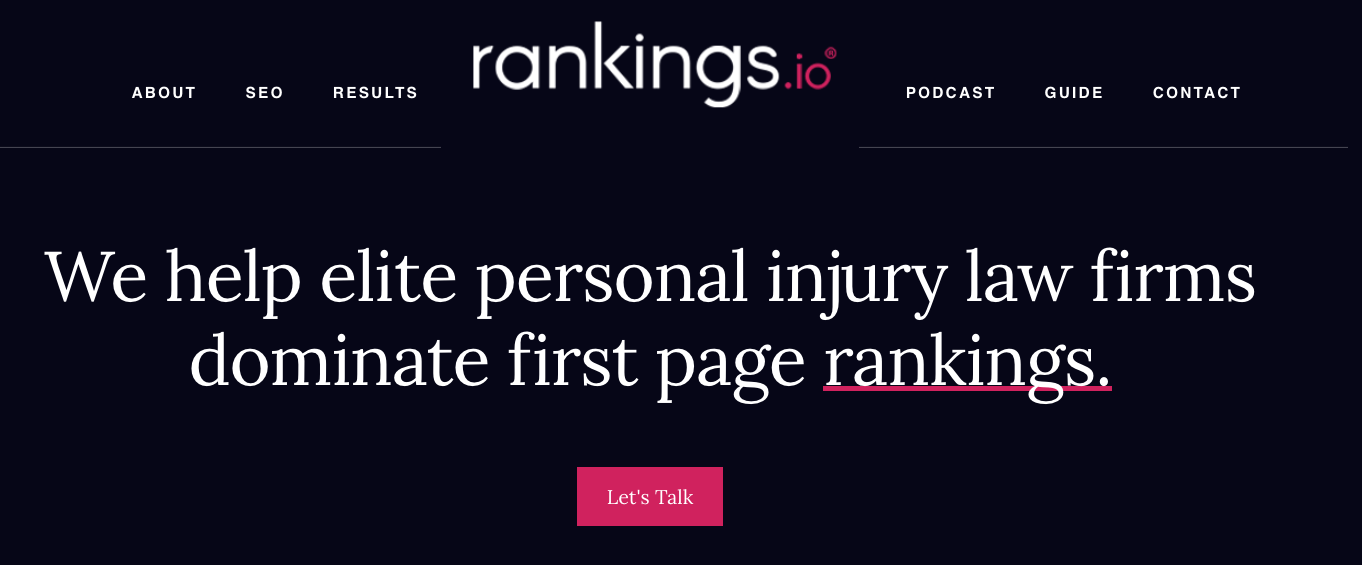
Their website header states it perfectly. It’s also important to note, as of writing this article Rankings is on pace to post $15m in annual revenue.
This stuff works – keep reading.
Creating your offer
This process is all about understanding pain points. Once you know your prospect’s pain point, we can map an offer.
I like to start by pulling out a piece of paper and plot a line with two head pillars.
On the extreme left, write down ‘pain point’ and on the other end, write ‘happy client.’
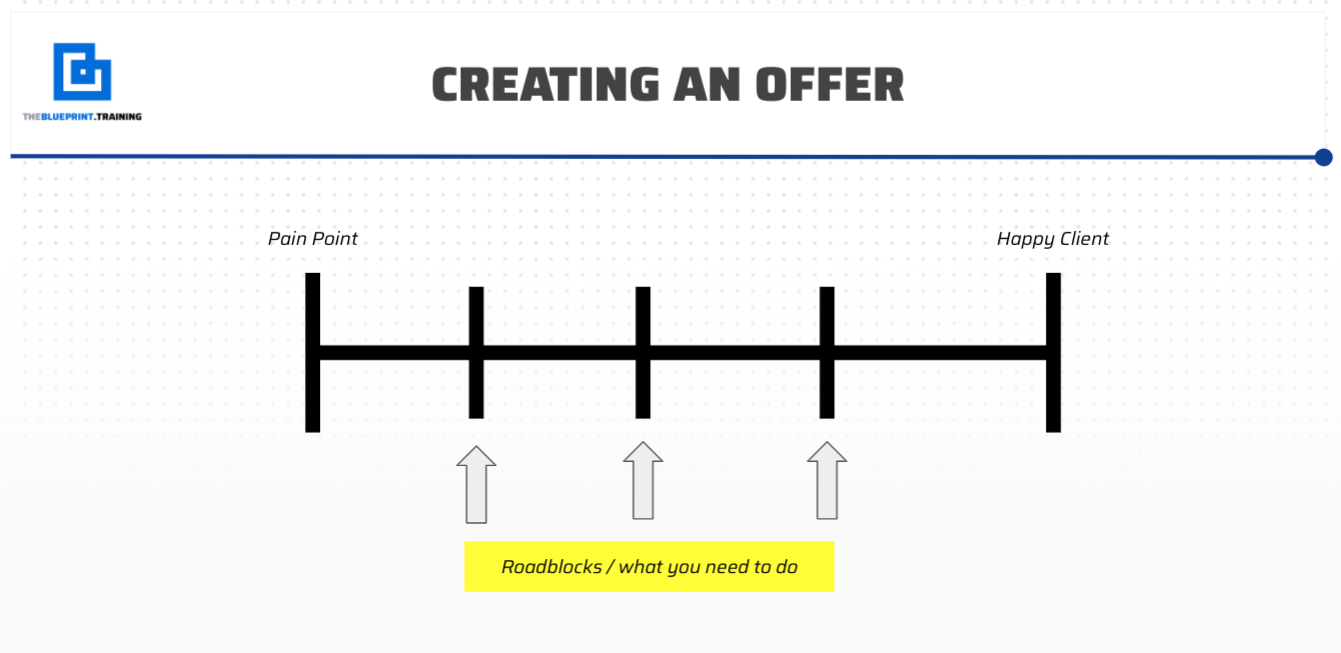
Now, you’ll need to identify the steps that go into solving the pain point.
In other words, mark the roadblocks – these will be the steps you need to take to move the client from their challenge to a happy client.
Tip: Identify 3-5 roadblocks, no more. Keep them simple, don’t overcomplicate it.
Let’s use The Blueprint Training as an example.
Our target audience is SEO agencies who are looking to scale to 6 figure months (and beyond).
How do we take them from where they are, to where they want to be?
- Focus on solving a specific problem, for a specific type of client
- Create a service to solve the problem (and productize it)
- Setup marketing systems to generate inbound leads
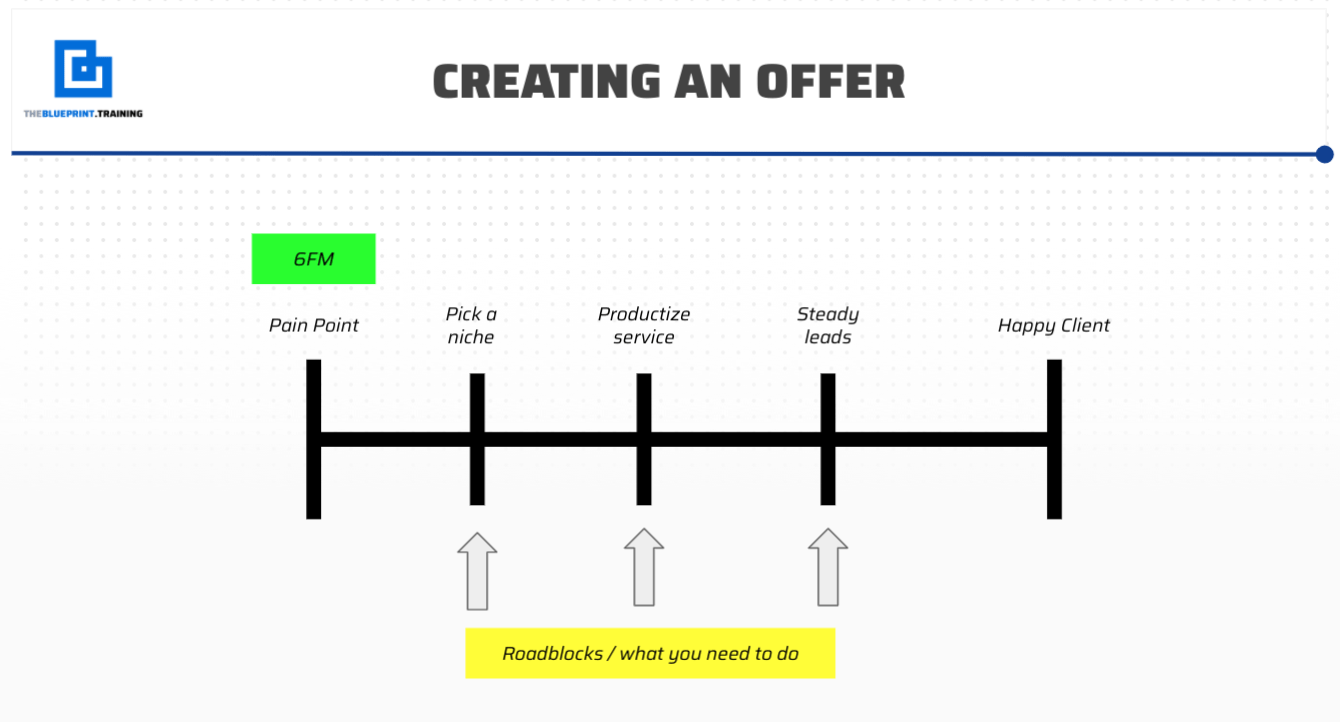
We know that if we can help our clients do these 3 things, they’ll have 6 figure months.
Once you’ve figured out what goes into your offer that takes clients from where they are to where they want to be, get to summarizing it all into an offer statement.
How? By answering the three questions of a nifty offer statement.
Let’s dress up our example offer into a statement:
“We help SEO agencies scale through our proven growth framework”
The statement answers all three pillars:



See? It’s 


Pricing your offer
This is different than pricing campaigns – this is an exercise to understand the value of your work.
We can do this by using our labor/information matrix:
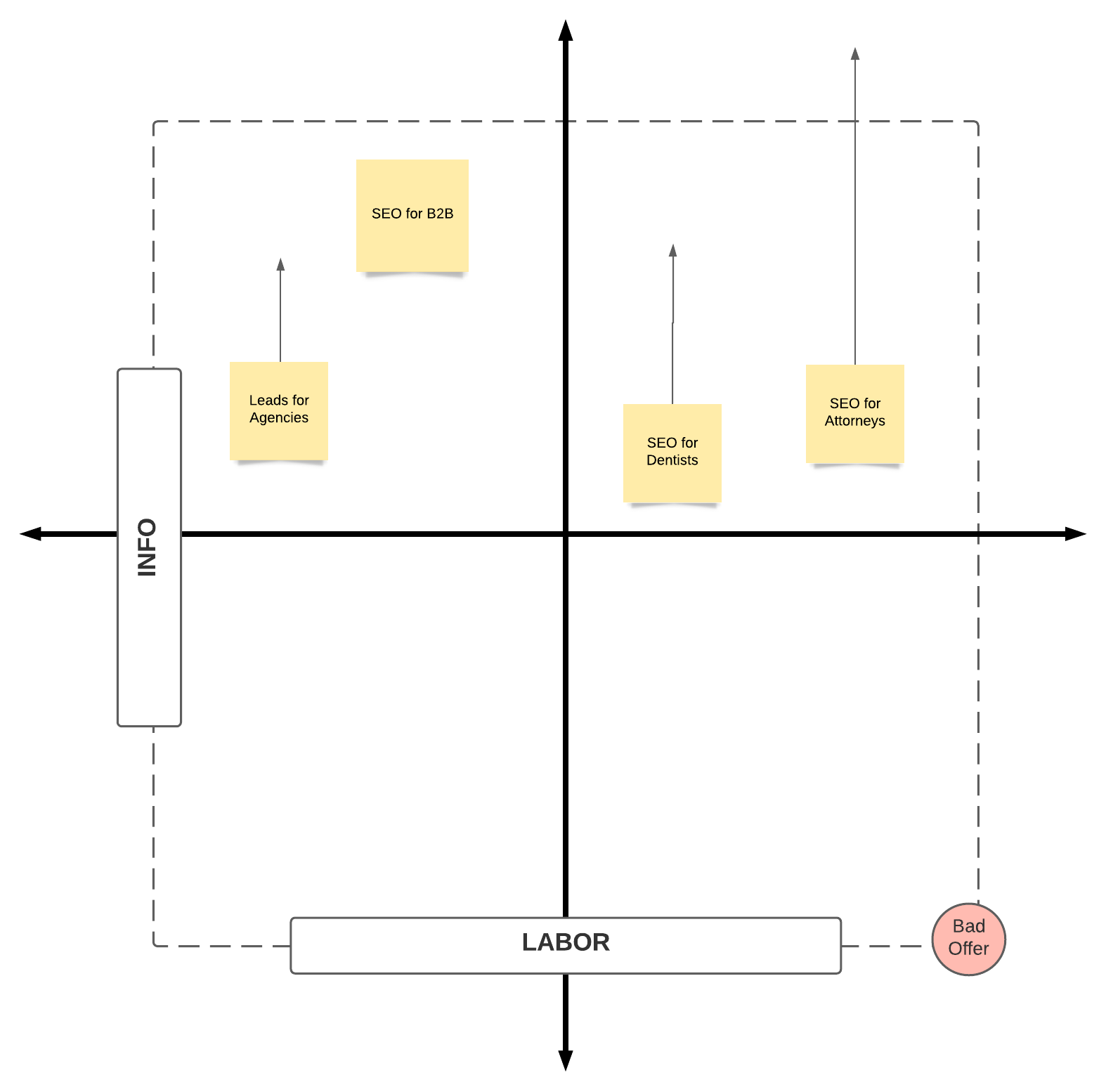
Ideally, you want to work with clients in the high information, low labor zone – this is where we can charge the most (and net the most).
For context:


You can only tell exactly what your client is looking for and, therefore willing to pay, if you know your audience inside out.
I’ll wrap this here, as we have a full guide on offer pricing that dives deeper.
Create your agency offer today
We’ve given you the blueprint to create an impactful offer. Now, it’s up to you to get to work.
So grab a piece of paper and start mapping out exactly what you’ll need to do for your target client to solve their pain point.
Need help?
Our team of growth consultants are standing by to help your agency select the right market position and create an offer they can’t say no to. Book a consultation to find out more.